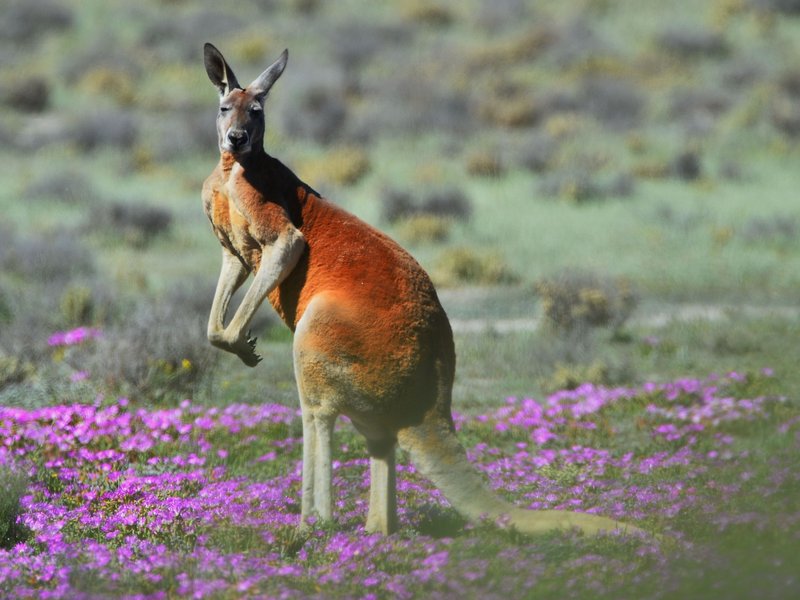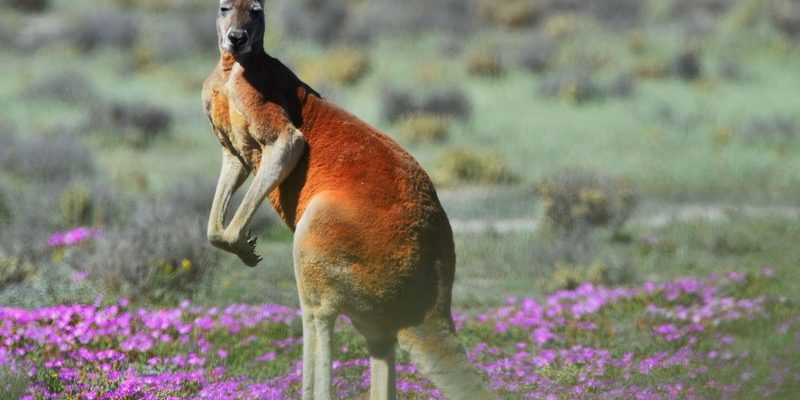
Let’s dive into this dynamic creature’s life. If you’ve ever wondered how the red kangaroo fits into the broader picture of its habitat—think of it as a piece of a puzzle, contributing to the larger image—you’re in the right place. By understanding its role, we gain insight into the health of the land it inhabits and why every part of nature matters.
What Makes the Red Kangaroo Unique?
The red kangaroo is not just the largest of its kind; it’s an iconic symbol of Australia. These impressive animals can stand over six feet tall and weigh up to 200 pounds! But they aren’t just muscle; they have fascinating adaptations. With powerful legs, they can leap distances of over 30 feet in a single bound. This makes them incredibly efficient at navigating their vast, arid habitats.
In the realm of survival, red kangaroos are herbivores, primarily eating the tough grasses and leaves that grow in their dry environment. Here’s the thing: their digestive systems are specialized to extract moisture and nutrients from their food, which allows them to thrive even in harsh conditions. If you think about it, this adaptation is like having a built-in water bottle—they can go long periods without drinking, relying on the moisture in their diet.
Food Web Dynamics: The Red Kangaroo as a Herbivore
Red kangaroos play a crucial role in the food web. As herbivores, they help control plant populations and contribute to the health of their ecosystem. By munching on grass and other vegetation, they keep these plants from overtaking the landscape, allowing diverse plant species to flourish.
Moreover, their grazing habits leave behind nutrient-rich droppings that act like a natural fertilizer. This process enriches the soil, promoting plant growth and enhancing biodiversity. It’s fascinating to think about how one animal can impact an entire environment just by eating and excreting!
Interactions with Other Species
The red kangaroo doesn’t exist in isolation; it’s part of a complex web of life. Predators such as dingoes and eagles rely on kangaroos as a food source. In this way, the red kangaroo helps sustain these predator populations, creating a balance in the ecosystem.
Interestingly, kangaroos also form an important connection with other herbivores. When they graze, they often clear paths through thick vegetation, making it easier for other animals, like wallabies and smaller mammals, to access food. It’s a bit like hosting a dinner party: when one species clears the table, it opens up opportunities for the others to join in!
Impact on the Habitat
The habitat of the red kangaroo is mainly the open grasslands and deserts of Australia. They thrive in regions with sparse vegetation, and their movement across these areas helps prevent overgrowth. This is vital during dry spells when water is limited.
By keeping grass levels in check, red kangaroos prevent wildfires from becoming too intense. Overgrown areas can become fire hazards, so the kangaroos’ natural grazing helps ensure that vegetation remains manageable, thus keeping both plants and animals safe. It’s a form of natural landscaping that promotes a healthier ecosystem.
Human Interactions and Conservation
As much as red kangaroos contribute to their ecosystem, human activities put them at risk. Habitat loss due to urbanization, agriculture, and climate change threatens their populations. This is where conservation efforts come into play. Protecting their habitat is essential not only for the kangaroos but for the entire ecosystem they support.
Community involvement is key. In Australia, there are various initiatives aimed at preserving the natural habitats of red kangaroos. By participating in these programs, communities can help maintain biodiversity and protect this iconic species. Honestly, when we take steps to ensure the survival of kangaroos, we also safeguard the health of the entire ecosystem.
The Cultural Significance of the Red Kangaroo
The red kangaroo holds a special place not just ecologically, but also culturally. For Indigenous Australians, the kangaroo is a symbol of strength and resilience. In their stories and artwork, it represents a deep connection to the land and its rhythms. The impact of the red kangaroo extends beyond ecosystems; it mirrors cultural values and traditions passed down through generations.
This cultural significance can lead to a greater appreciation for the species and its role in maintaining balance. When we recognize the kangaroo as more than just an animal, we embrace the idea that every creature has a part to play in the grand tapestry of life.
Why Protecting the Red Kangaroo Matters
As we’ve seen, the red kangaroo isn’t just another animal hopping around. It’s a keystone species that helps maintain the health of its ecosystem. Protecting them means protecting the delicate balance of their environment, which ultimately benefits countless other species.
You might be wondering how you can help. Supporting conservation efforts, promoting awareness, and advocating for sustainable practices all contribute to the well-being of red kangaroos and their habitats. Every small action counts, and collectively, we can make a big difference.
In conclusion, the red kangaroo’s role in its ecosystem is multifaceted and vital. From influencing plant growth to supporting other species and enriching cultural heritage, this remarkable creature is woven into the fabric of Australian life. By appreciating and protecting them, we can help ensure that this iconic symbol continues to thrive for generations to come.

